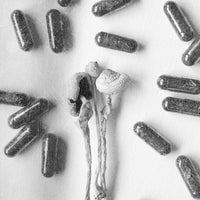Dopamine’s reputation as the “feelgood hormone” has been the source of much misunderstanding, so let’s clarify right out of the gate: When we get pleasure from listening to our favorite music, eating something tasty, scoring a winning goal, helping someone in need, making love, receiving a sincere compliment, etc., out comes the dopamine. Rather than creating good feelings, this stuff is the brain’s way of “bookmarking” enjoyable experiences, thereby adding those activities to our reward system’s playlist of favorites. According to some neuroscientists, this helps motivate us to keep coming back for more.
It’s a great system, but it has its downside: Once dopamine has marked a pleasurable behavior with its scent, our impulse to repeat that action can lead to compulsive binging on things like food, gambling, social media and other online activity, sexual stimulation, shopping, thrill-seeking, video games, TV and, of course, drugs, including alcohol, sugar and caffeine. In those kinds of situations, it might be time for a dopamine detox.
What Is (and Isn’t) a Dopamine Detox?
Psychiatrist Dr. Cameron Sepah is credited with creating “dopamine fasting,” aka the dopamine detox. He has warned against taking that term literally, though. As he explained to the New York Times, “Dopamine is just a mechanism that explains how addictions can become reinforced, and makes for a catchy title.”
What you’re really detoxing from here is compulsive pleasure-seeking through unhealthy behaviors. Abstinence from those behaviors doesn’t actually lower dopamine levels, and dopamine is not a harmful chemical that one needs to “detox” from. These are not small distinctions, as misinterpretation has led some people to avoid all pleasurable activity—or, in extreme cases, any stimulation whatsoever.
So, to be clear, while things like darkness retreats, silence retreats and sensory deprivation chambers might help with this endeavor, dopamine fasting itself is just a matter of identifying and then taking a break from actions you might too frequently turn to for a quick boost.
How to Do a Dopamine Detox
The first step of this process should be fairly easy: If you’re nagged by a feeling that you’re spending too much time indulging in any of the behaviors mentioned above, or if these activities are destructive to your social, professional and/or scholastic life, congratulations! You’ve identified the problem.
Now comes the hard part: stepping away from those things. Sepah recommends starting with somewhere between one and four hours of abstinence from the problematic behavior(s) at the end of each day. Just an hour a day can gradually grow into four hours per day, one day per weekend can turn into one weekend per quarter and this can turn into one full week per year.
On the other hand, this how-to, which is specifically geared toward breaking internet addiction, claims that a dopamine detox should last a minimum of two weeks. Other sources specify 90 days as the typical detox length.
Taming the Beast
You can make your detox process smoother by understanding the principles of stimulus control and habit-swapping, both of which we’ve explained here.
A couple of examples of how to put stimulus control to good use: If you’re trying not to binge on Netflix, put the remote out of sight or at least somewhere hard to reach. If the internet is your weakness, turn off your phone’s notifications and use software that blocks sites that might lure you. The specifics of the latter, along with lots of other tips on breaking social media addiction, can be found here, here and here.
Sepah espouses “urge surfing”: During a detox, notice when the impulse to engage in an unwanted behavior arises. Where do you feel it in your body? On a scale of 1 to 10, how intense is it? Sit with the feeling for a while. With enough repetition, the desire will loosen its grip.
Habit-Swapping
Similarly to how going on a vegetarian diet can necessitate the use of nutritional supplements, it can help to replace certain dopamine-triggering habits with healthier behaviors. Here are some activities that raise dopamine levels in nourishing ways:
- Go for a walk in the sun and/or get other forms of exercise
- Read
- Journal (especially gratitude journaling)
- Socialize
- Meditate and do mindfulness practice
- Cook and eat balanced meals
- Listen to music (especially at high volume)
- Do volunteer work
- Do cold water immersion
Side Effects of Dopamine Fasting
Along with good old-fashioned boredom, you might experience withdrawal symptoms during your detox. Some of the most common of these are headaches, depression, panic attacks, anxiety, irritability, lower stress tolerance and decreased motivation levels.
Dr. Anna Lembke, psychiatry professor at Stanford and author of Dopamine Nation: Finding Balance in the Age of Indulgence, told TIME that patients who are pathologically addicted to digital media generally feel lousy for the first 10 to 14 days of detoxing. Then they begin to regain focus and appreciation for less high-octane activities like cooking or walking.
Before You Go …
We really can’t stress this enough: It’s healthy—essential, even—to enjoy life’s little treats. The question is: Are you hooked on certain stimuli to the point where it’s disrupting your daily life? If so, here’s to turning over a new leaf in 2024.
Damon Orion is a writer, musician, artist, and teacher based in Santa Cruz, CA. He has written for Revolver, Guitar World, Spirituality & Health, Classic Rock, High Times and other publications. Read more of his work at damonorion.com.




